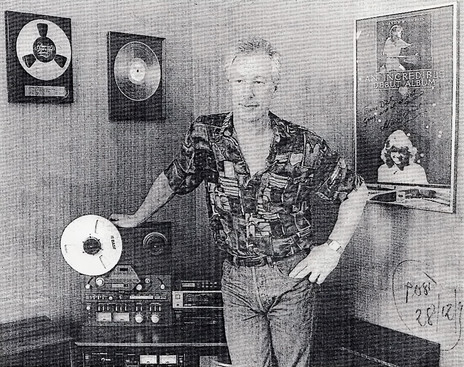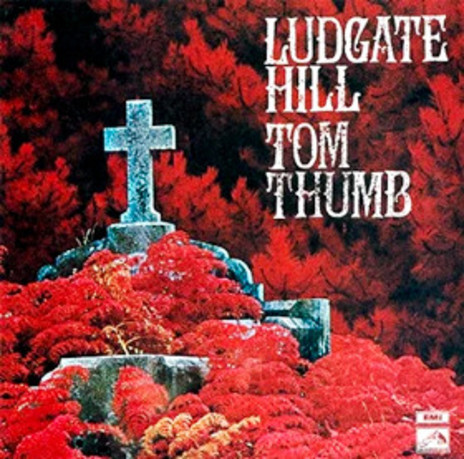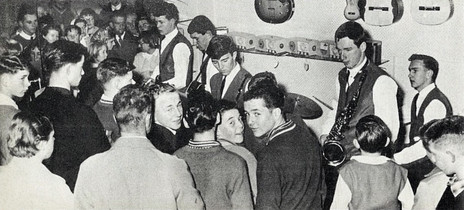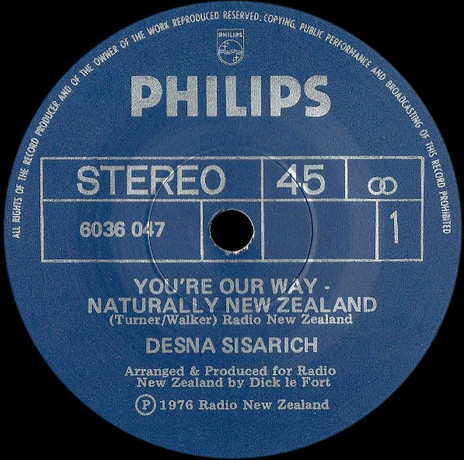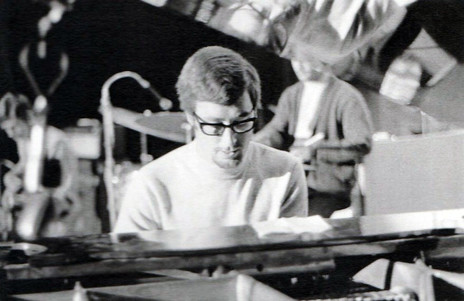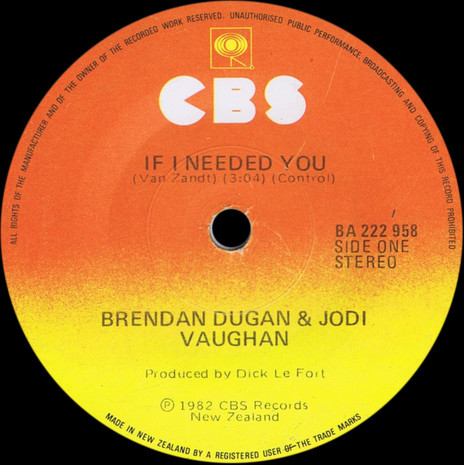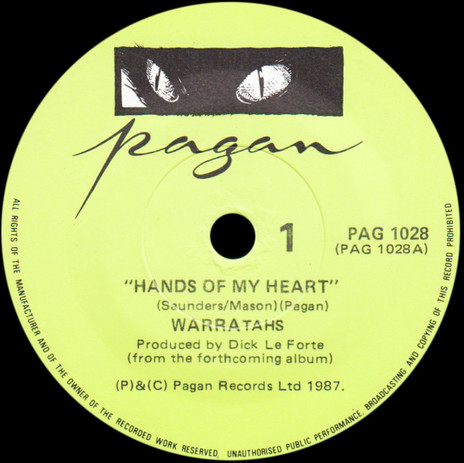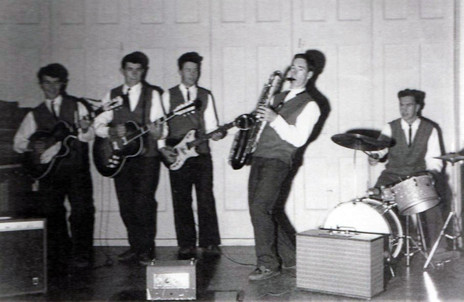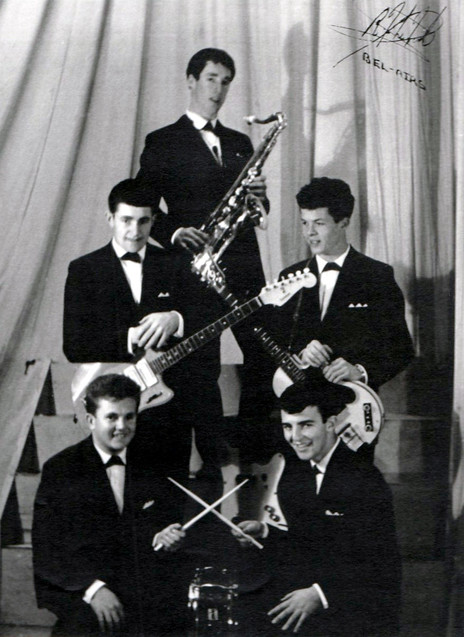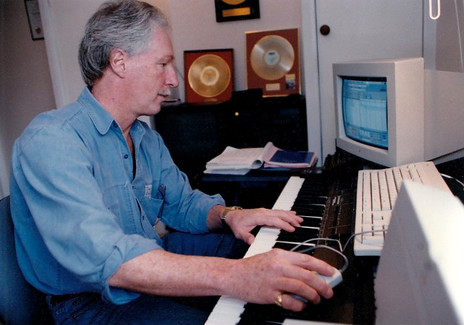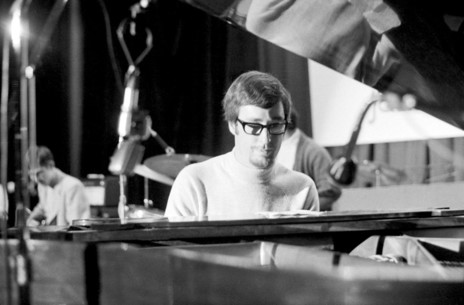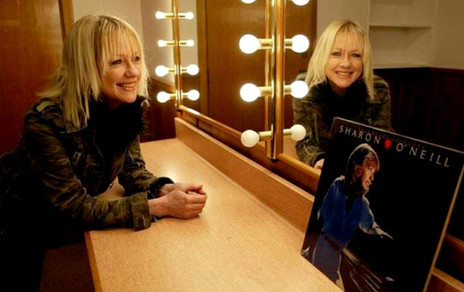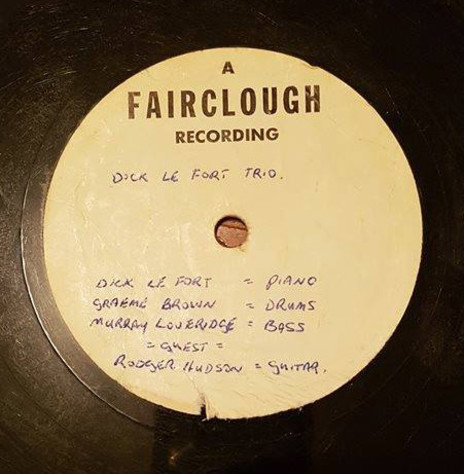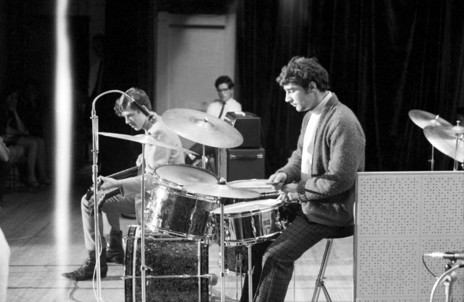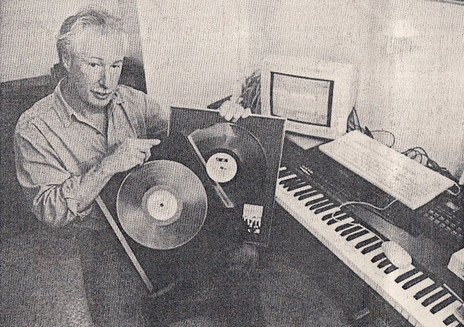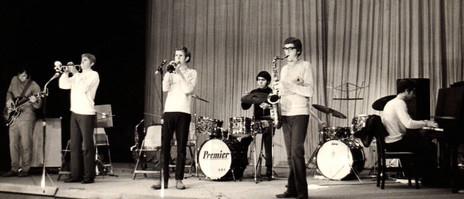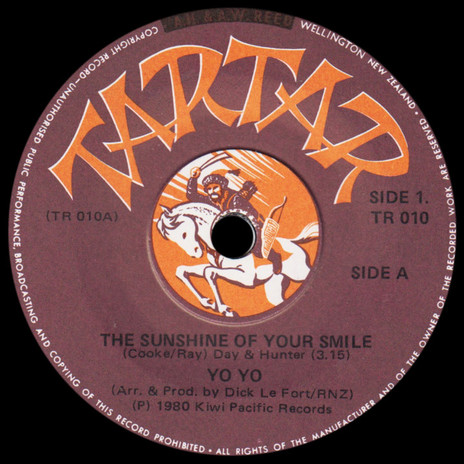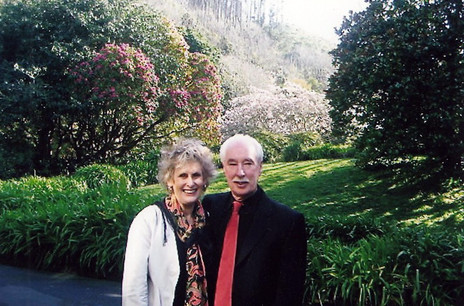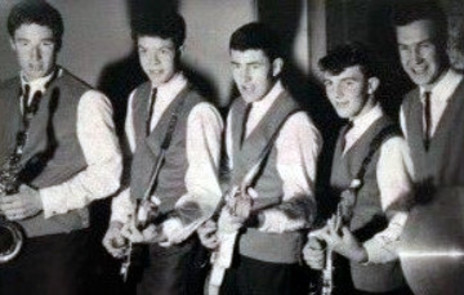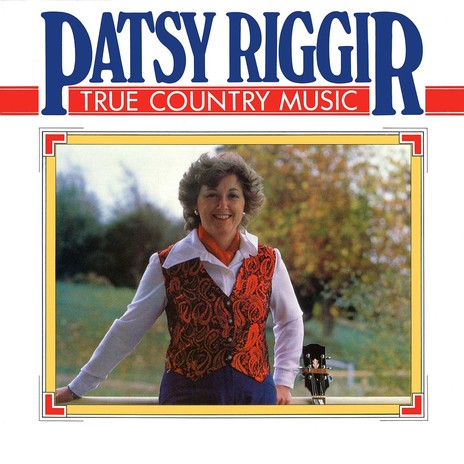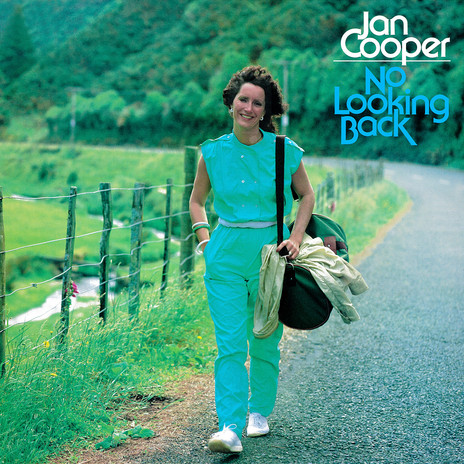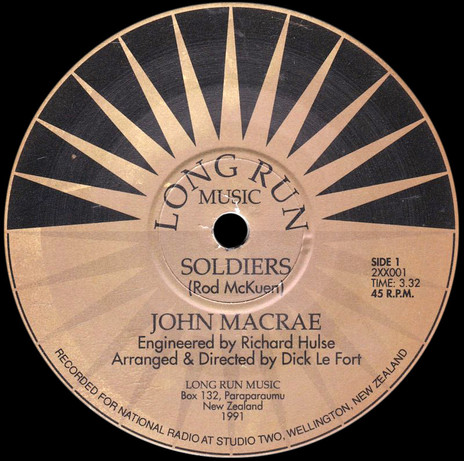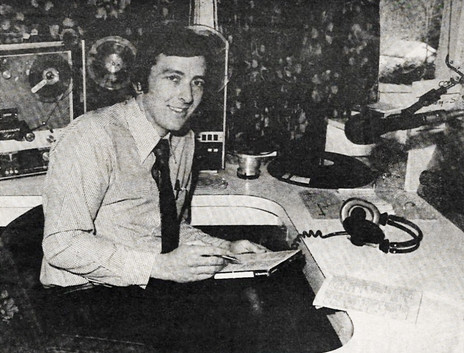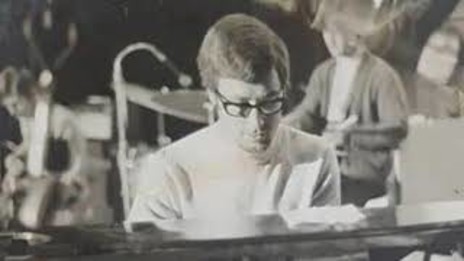During his time at RNZ, he produced many artists in the network’s Studio Two in Wellington, Christchurch’s RNZ Studio and Mandrill Studios in Auckland. As well as producing for the public broadcaster, Le Fort was freelancing through his own The Music Production Company.
Le Fort produced many artists in RNZ’s Studio Two, Broadcasting House, Wellington
Richard Le Fort was born in Wellington on 6 May 1946, and started learning piano at the age of seven, but “only because they had a party at the end of the term,” he told AudioCulture in 2024. Although the tutelage didn’t continue, he again took up lessons as an 11-year-old until he was banned from further instruction because he put his own improvisations into a Mozart piano sonata he was selected to perform.
At Nelson College, Le Fort would play Dave Brubeck pieces on the school’s grand piano when the music teacher – choral specialist Ralph Lilly – was inevitably late. One day the teacher walked in with the inspector of schools, said “Continue, Le Fort,” and walked out. In the half-hour before he returned, Le Fort kept playing to his friends, though he wasn’t supposed to be touching the piano.
Despite being encouraged to steer clear of music by his Nelson College teacher, Le Fort joined The Downbeats while there with Brian Peacock (vocals/guitar), Philip Pilbrow (vocals/guitar) and Gary Stewart (drums). When guitarist Dennis Rae joined, Peacock went on to bass and the band changed its name to The Bel Airs. As well as playing piano, Le Fort took up the saxophone.
“When I left Nelson College, I worked for a trading bank,” he said. “Our lead singer and bass player was Brian Peacock, who later joined The Librettos in Wellington before leaving for Australia to play with Normie Rowe and The Playboys. The Bel Airs tried to rebuild the band, but everything fell through after Dennis and I were transferred in our bank jobs from Nelson to Wellington.”
Another transfer took Le Fort to Levin for two years where he applied for a position in the New Zealand Broadcasting Corporation and was appointed to Radio 2ZW in Whanganui. “After two years studying to be a bank accountant, I really had to leave.
“At this time, I studied for a BMus majoring in composition extramurally at Victoria University in Wellington.” He attended lectures once a week, travelling from Whanganui on the Dominion bus that left at four in the morning, and returning by train through Palmerston North the next day. His lecturers included the composers David Farquhar (Ring Round the Moon) and Jenny McLeod (Under the Sun, Earth and Sky).
While in Whanganui, Le Fort became interested in jazz and formed The Dick Le Fort Trio with drummer Graeme Brown and bass guitarist Murray Loveridge. They played at the Tauranga Jazz Festival in 1969, and later in the inaugural Palmerston North Festival. At the Tauranga festival, he recalled to AudioCulture in 2025, “We were dead scared. We went along and took in what we could. But there wasn’t a lot of sharing going on in those days. The older guys didn’t want to know what the younger guys were doing, and vice versa. It’s not like now, where everyone meets and it’s collegial. It was tough going.
“I gave jazz away because I suddenly realised what a small audience it had.”
“The reason I gave jazz away because I suddenly realised what a small audience it had. I thought, am I going to spend day after day learning modes and jazz structures, getting into it deep? Because I was just on the surface of it. So I thought, I don’t think it’s worth it. I had the same feeling one day when I was walking from the university down to Lambton Quay, and I thought, if I stopped anyone here and asked them about Renaissance music – how many people would I be able to have a conversation with? I wanted to do music with a commercial sense. So I wrote commercials for radio, I got into film music, and I got into pop music, and I thought that's where it is.”
At 2ZW, Le Fort met DJ Martin Hadlow, and they began writing songs together. “We tripped off down to Wellington and knocked on [HMV producer] Peter Dawkins’ door. ‘Sit down, boys.’ He’d just come back from overseas, and he had a listen. He said, ‘Oh, we can work together.’ In 1969, their song ‘Time Beyond (Can’t We Still Be Friends)’, was the B-side to Whanganui group The Top Shelf’s single ‘Baby, The World Really Turns (Many A Slip Twixt Cup And Lip)’, produced by Peter Dawkins and released on HMV. “It was a bloody horrible piece of music, but Peter loved it.”
Soon after, Le Fort and Hadlow pitched a 3’50” demo to Dawkins of a piece of music they had written inspired by the Great Fire of London in 1666. The “pop concerto” was called ‘Ludgate Hill’. Dawkins brought in raucous R&B band Tom Thumb and came up with arguably New Zealand’s first prog-rock release, the concept EP Ludgate Hill, released in 1970. The strings, which Dawkins played back in reverse in places to enhance the psychedelic aspect, were orchestrated by Garth Young.
“When we wrote it, it was only three-and-a-half minutes long,” Le Fort recalled to AudioCulture. “When he finished, it was about 14 minutes long and it had everything in it. I didn’t like the track much, but it made waves overseas.” Years later, he says, a pop historian wrote it was “ ‘the best example of psychedelic music for the period. Is this not New Zealand’s best-ever recorded piece of music?’ And I hated it.”
Early in the new decade, Le Fort formed The Jacob Manning Group with trumpeter Rob Gillies, who would go on to join Split Enz, future Māori Volcanics drummer Dean Ruscoe, and brothers Barry and Brian Brown-Sharpe. Barry Brown-Sharpe would also appear with Quincy Conserve.
Le Fort returned to Nelson with RNZ and worked as a radio programmer alongside aspiring songwriter Sharon O’Neill, who sometimes sang on Le Fort’s jingles. “After four years in Nelson I was transferred to Radio New Zealand’s Wellington head office,” Le Fort said.
“It was at that time that I started working in the studio as a music producer, eventually ending up as the network’s executive music producer responsible for seeking out and developing new talent.”
Le Fort says he had a different approach to Broadcasting’s early music producers
Le Fort says he had a different approach from Broadcasting’s early music producers, who seemed to arrive with a clipboard, time a song with a stopwatch, then leave. Engineers imposed a demarcation point between their territory and the producers’. An unwired knob on the desk they nicknamed “the producer’s button” was twisted to pretend they were listening to the producer’s instructions. Le Fort preferred to take part in the recording – sitting beside the engineer, or even in the studio, working out arrangements with a performer or band, then playing piano alongside them.
He became involved in producing radio programmes such as Unsung Heroes, which featured the pick of talent from the busy club circuit. Le Fort also produced Wellington station 2ZM’s Band of the Month promotion, also known as Homegrown. Among the acts was Sharon O’Neill and her band. “In 1978, we recorded two half-hour programmes, the material of which were subsequently offered to CBS’s John McCready for potential commercial release,” he said. “And that was the start of both Sharon’s and my commercial recording careers.” The resulting LP was This Heart This Song.
Le Fort received a QE2 Arts Council grant to study music production in the United States, visiting and being alongside producers and songwriters from the country music studios of Nashville to the Motown recording studios in Los Angeles.
“During my time in Nashville, I sat in on a demo session with two of the best Nashville writers at that time, Kye Fleming and Dennis Morgan. They were recording new songs for their management company run by top country music producer Tom Collins. He said I could have use of those songs.”
Back in Wellington, EMI asked Le Fort to assess and possibly produce a new country singer called Patsy Riggir, who had sent them an audition cassette. He obliged and produced Riggir’s first record, True Country Music, that included four of the Fleming/Morgan songs he’d brought back from Music City.
With country music finding renewed huge popularity in New Zealand on the back of prime-time TV show That’s Country, Le Fort produced LPs for Brendan Dugan (two), Suzanne Prentice, Jan Cooper, and Dugan and Vaughan’s Fairweather Friends. The latter peaked at No.15 on the album chart in 1982 and its single, ‘No Fool Like An Old Fool’ (another Fleming/Morgan effort), rose to No.12 and spent 10 weeks in the NZ Top 40.
RNZ’s studios “were making radio programmes and ads for their stations, not records”
There were complaints from private studios that public radio’s studios were taking their business. RNZ responded that their studios were making radio programmes and ads for their stations, not records. Nevertheless many albums were produced at Studio 2 in the 1980s, by Le Fort and other RNZ studio staff such as Tony Burns and Neil Maddever. (As well as the country artists above, other acts recorded in Studio 2 included The Hulamen, The Pelicans, and The Mockers.)
Two of the best-known albums produced by Le Fort at RNZ’s Studio 2 are The Warratahs’s 1987 debut The Only Game In Town, and its 1989 follow-up, Too Hot To Sleep. Both went platinum. “Barry [Saunders] came back from overseas, spent time with The Tigers, then told me he wanted to play country music. He looked at getting a drummer, but then said, ‘Let’s just take the kick drum away.’ Maybe we ended up with a snare drum and a cymbal. Simplicity is the special thing Barry brought to that band; it’s what made the band right.”
In the 1980s, country music was riding one of its regular waves; there were country stalwarts in commercial radio such as Wayne Mowat and Neil Collins who understood its appeal, especially in the provinces. In 2025 Le Fort said country was on another roll.
But Le Fort wasn’t only involved in country music. He also produced easy listening music – unlikely to be recorded by commercial labels, it helped fill a gap in RNZ’s playlists – as well as light-orchestral music and library tracks, and station promotions. He was at the helm for jazz recordings by the likes of Terry and Jonathan Crayford, Paul Dyne and Roger Sellers, Colin Hemmingsen, and Mike Booth. “Artists Kevin Clark, Jacqui Fitzgerald and Mike Nock won Tui and RIANZ awards for their albums, with Kevin winning two,” he said. He also recorded Tommy Adderley’s As Time Goes By, the singer’s last album before he passed in 1993.
In the pop vein, Le Fort produced memorable sessions with former Quincy Conserve frontman Malcolm Hayman, Short Story guitarist Kevin Bayley, Redeye alumni Bob Smith, Tom Swainson and Frits Stigter, James Gaylyn, Frankie Stevens, Martin Winch, a pre-Mi-Sex Steve Gilpin, an RNZ production for Th’ Dudes, and in-concert productions by American soul trio The Hues Corporation and American jazz singer Sarah Vaughan.
Le Fort’s first-call studio musicians over the years were drummer Jim Lawrie (Street Talk, The Pink Flamingos), bassists Rob Winch (Tamburlaine) and Clinton Brown (Rockinghorse, The Warratahs), guitarists Kevin Watson (Country Flyers) and John O’Connor (Redeye), and vocalists Gina Stevens, Sheryl Rogers, Barbara Griffin, Jan Jackson, Rob Winch and Bob Smith. Le Fort almost always added keyboards on his productions.
Since leaving RNZ in 1993, Le Fort has continued to produce artists
In 2010, he was made a Member of the New Zealand Order of Merit (MNZM) for services to music. Since leaving RNZ in 1993 he has continued to produce artists, initially hiring private studios and finishing post-production in his home studio.
In the 2020s Le Fort began working with a young singer from Whanganui, Sophie Toyne. He first heard her while driving, when Toyne’s rendition of a Christmas song came on the radio. Early in 2025, Toyne won the CCMA award at the Tamworth country music festival. “She cleaned up at Tamworth this year,” Le Fort told AudioCulture in 2025. “She’s going to have her own album out on Tasman Records in Sydney – and there’s going to be a Sharon O’Neill song on it.” ‘Service of Mine’ was written by O’Neill in the late 70s, when Le Fort was producing her This Heart This Song album, but the song wasn’t included. “I asked Sharon if she remembered it, she said, ‘Hell no, Dick – that song’s nearly 50 years old.’ I said, well it sounds like it was written yesterday.”
Under the name Richard Le Fort, in 2020 he released Anthem: orchestral versions of British classic rock. He has also written and produced house and dance material on Aardvark Dance and Aadvark Records in the UK. Sometimes he works in collaboration with Dutch composer David Koonen. “He was popular as a writer of house music, and I was doing all sorts of other things with him, like ambient music. Then he asked if I wanted to work on an EDM track.” Le Fort didn’t know the term but did some research and felt up to the challenge. Since then, the duo has produced many tracks including ‘Escape’, ‘Drop The Beat’, ‘Deep Space’, and ‘Odyssey’.
‘Escape’ and ‘Drop The Beat’ both reached No.2 on the worldwide Starfleet Top 60. In 2025 Le Fort and Koonen’s track ‘Morgan’s Organ’ entered the US DJ’s Masspool Top 50 chart at No.1. “It’s never happened to me before,” said Le Fort, beaming.
